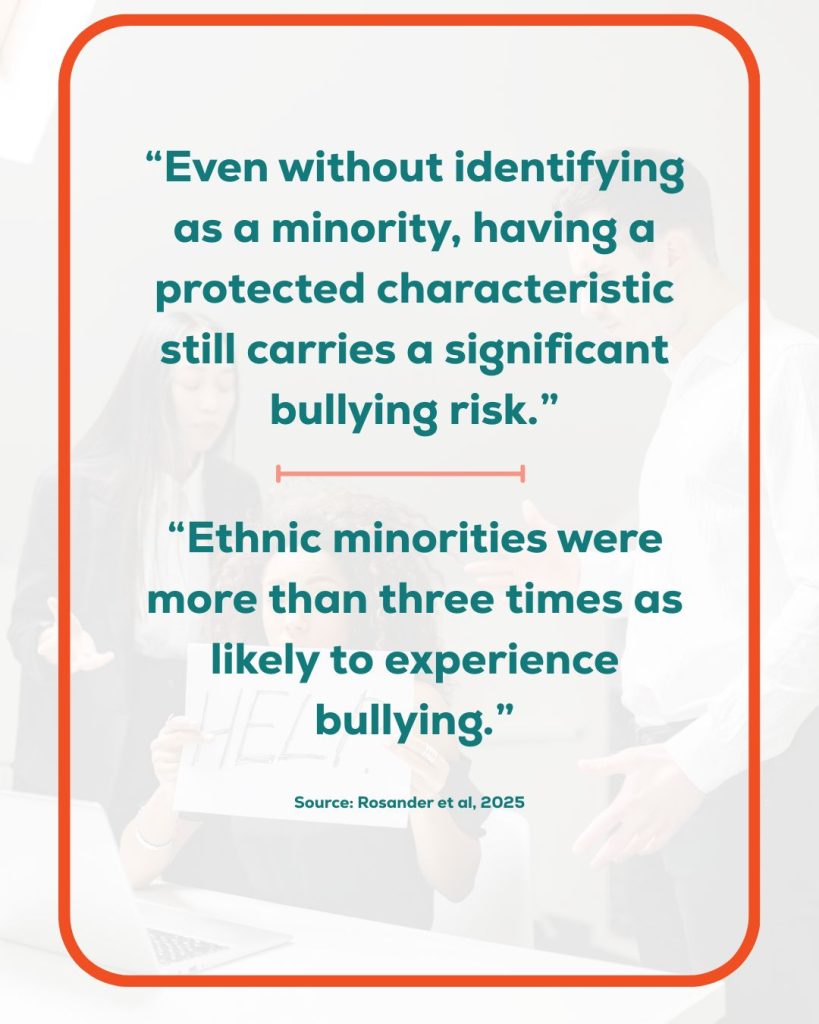Australia is experiencing a wave of social and political tension around migration and cultural identity. Recent commentary has singled out Indian communities, anti-immigration marches are claiming “record high” migration levels (despite data showing a 37% decrease between 2022–2024), and Jewish and Muslim communities are reporting increased incidents of hostility since the war in Gaza.
For Australians from it’s many non-Anglo backgrounds, this can be a deeply concerning time. Will they be the target of aggression in their community, or even in their workplace?
From the streets to the workplace
Workplaces don’t exist in isolation. Employees bring their personal biases, stereotypes and prejudices into work. Visible differences in characteristics including skin colour, clothing and accents can make some employees more exposed and vulnerable. This is especially when public discourse makes it seem acceptable to voice hostility.
The in-group and the out-group
Social identify theory shows that people naturally seek to belong and be part of the in-group. When threatened, the in-group looks for certainty and different cultural groups become an easy target because of their differences. They become the out-group. If they are smaller in size or number, as some cultures may be in your workplace, they are more vulnerable. Smaller groups are especially vulnerable, while larger groups are more protected. (Bergbom et al, 2021)
Are cultural groups really at more risk?
A recent study (Rosander et al, 2025) on protected groups (including disability, ethnicity, gender, religious, and sexual identity) compared the likelihood of them being bullied at work compared to non-protected counterparts.
It found:
- Employees in protected groups were over twice as likely to experience person related workplace bullying such offensive remarks, gossip or social exclusion.
- Those who felt like a minority (the research examined those who did and did not feel like a minority) were five times more likely to experience person-related bullying and nearly three times more likely to face work-related bullying.
- For ethnic minorities specifically, the risk of workplace bullying was more than tripled.
It also separated bullying from discrimination in the research, finding that it’s important to distinguish discrimination from bullying. Discrimination may occur in a single act. Bullying is ongoing, repeated, and often more damaging to psychological health.
Actions for employers
Under Australian health and safety laws, employers must provide a safe workplace, free from risks of harm including culture-based bullying.
It requires a proactive and systemic approach including:
- Consider systemic issues — review how inclusive your workplace really is, and monitor outcomes over time.
- Recognise group identity — acknowledge diversity within teams to reduce stereotyping and out-group dynamics.
- Set clear standards — establish behavioural expectations in both policy and practice, reinforcing that respect for diversity is a core value.
- Consult effectively — adapt consultation methods to cultural norms (e.g., silence or lack of eye contact may be respect, not disengagement).
- Equip managers — train leaders to identify subtle bullying, intervene early, and create a trusted conflict management climate.



